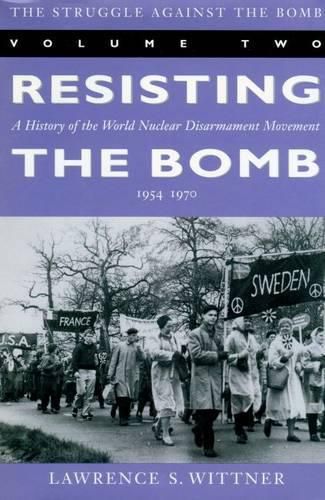Readings Newsletter
Become a Readings Member to make your shopping experience even easier.
Sign in or sign up for free!
You’re not far away from qualifying for FREE standard shipping within Australia
You’ve qualified for FREE standard shipping within Australia
The cart is loading…






Resisting the Bomb continues the story, begun in the award-winning One World or None, of humanity s efforts to avert nuclear destruction. Beginning with the catastrophic atmospheric nuclear weapons tests of 1954, it describes the gradual development of a grassroots, worldwide movement for nuclear disarmament. By the late 1950 s and early 1960 s, this campaign had taken on mass dimensions in many nations, with antinuclear protests simultaneously drawing hundreds of thousands of people in dozens of countries. The movement engaged the efforts of some of the world s most prominent and revered intellectuals, such as Albert Schweitzer and Bertrand Russell, and had a substantial impact on major political, labor, and religious groups, as well as on public opinion. Even within the relatively closed confines of Communist countries, antinuclear activities emerged and exerted pressure on public officials. As a result, the public policy of numerous countries began to shift away from a reliance upon nuclear war and toward curbing the nuclear arms race a process that culminated in the partial test ban treaty, the nuclear nonproliferation treaty, and other arms control measures of the 1960 s.
$9.00 standard shipping within Australia
FREE standard shipping within Australia for orders over $100.00
Express & International shipping calculated at checkout
Resisting the Bomb continues the story, begun in the award-winning One World or None, of humanity s efforts to avert nuclear destruction. Beginning with the catastrophic atmospheric nuclear weapons tests of 1954, it describes the gradual development of a grassroots, worldwide movement for nuclear disarmament. By the late 1950 s and early 1960 s, this campaign had taken on mass dimensions in many nations, with antinuclear protests simultaneously drawing hundreds of thousands of people in dozens of countries. The movement engaged the efforts of some of the world s most prominent and revered intellectuals, such as Albert Schweitzer and Bertrand Russell, and had a substantial impact on major political, labor, and religious groups, as well as on public opinion. Even within the relatively closed confines of Communist countries, antinuclear activities emerged and exerted pressure on public officials. As a result, the public policy of numerous countries began to shift away from a reliance upon nuclear war and toward curbing the nuclear arms race a process that culminated in the partial test ban treaty, the nuclear nonproliferation treaty, and other arms control measures of the 1960 s.